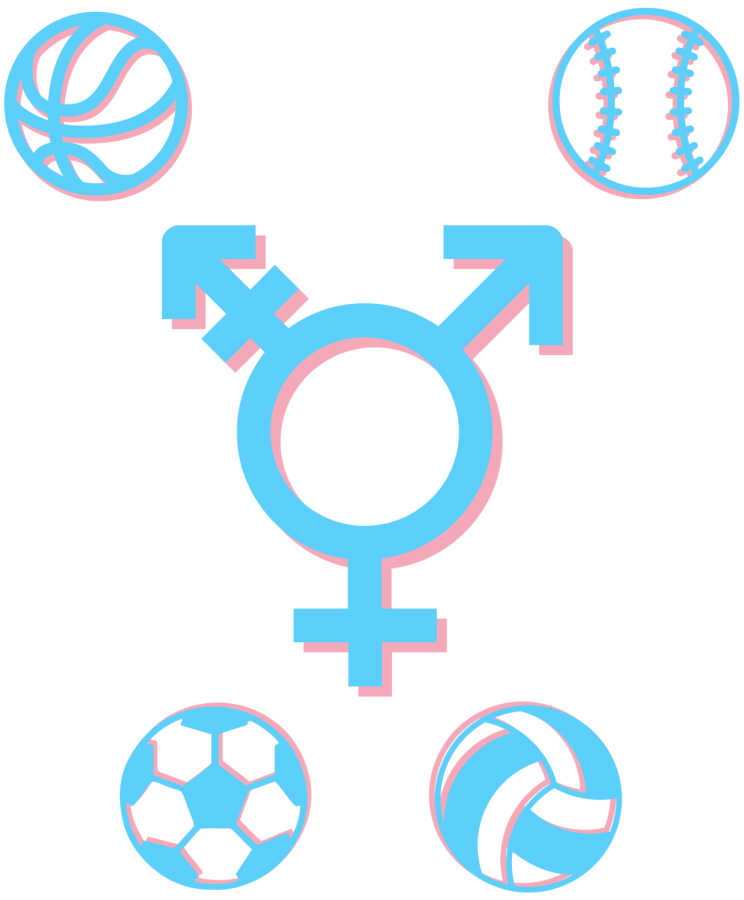Let’s talk trans athletes
Used with Permission by Canva for Education/Yandi Rs/Openclipart-Vectors/Pixabay/Fisher Meyerink
“The truth of the matter is that these bans on trans athletes were never about protecting the integrity of women’s sports. They have always been about further victimizing the most marginalized people in our society, portraying them as a threat of the world of sports in an effort to further alienate them.”
October 31, 2022
One of the most controversial topics in sports at the moment is that of whether or not transgender athletes should be allowed to participate in their gender’s sport. This topic is one especially relevant in South Dakota, where transgender students are currently prohibited from participating in high school sports. Today, I plan to explore whether or not this ruling is justified.
Movements to bar transgender students from sports is nothing new. In South Dakota, measures to do so have been on the table for seven years, with a law officially prohibiting the participation of transgender athletes in high school sports being passed this year, making South Dakota the tenth state to pass such a law. But what is the justification for this?
Before proceeding, I would like to acknowledge that these laws generally target trans women. The reasoning for this is that often, men have an inherent advantage in sports. The reasoning is that it would make sense that trans women would also have an inherent advantage. While this may be the case in a vacuum, the advantage present is not nearly enough to warrant an absolute ban. Joanna Harper, a Portland medical physicist, found that after beginning hormone therapy, trans women ran 10% slower than they had before, although, a study done by Dr. Timothy Roberts, a pediatrician and the director of the adolescent medicine training program at Children’s Mercy Hospital in Kansas City, Missouri shows that that leaves them at about 12% faster than cisgender women. The question is not whether there is any advantage to being a transgender athlete, the question is whether that advantage is more significant than any other biological trait that assists in sports performance. After all, the higher levels of testosterone present in most trans athletes can also be found in athletes assigned female at birth. Should they be barred from competing too?
It’s no secret that some people are just built to be better athletes. Height in basketball is a great example. It doesn’t matter how hard a short person works, if someone significantly taller than them puts in just as much effort, they are bound to be better. This is true to the extent that 17% of all people above seven feet in the United States end up in the NBA. The average height of an NBA player is 6’6’ a whopping 9 inches above average. Micheal Phelps, for example, is hyper-jointed in the chest, has double-jointed ankles that bend 15% more than his rivals and, and size-14 feet, which enables him to swim far more efficiently than anyone lacking in these traits. And yet there aren’t movements to prevent Phelps from swimming or people above the average height from competing in basketball, despite them having a far greater advantage than a trans athlete.
I’d like to end with showing how awful these anti trans athlete bills can be to the people they claim to be protecting. In Florida, for example, female athletes are required to provide extensive information about their menstrual cycles to compete. If that weren’t enough, “Save Women’s Sports” act initially included a provision requiring mandatory genital inspection for students accused of being trans. All this just to stop the estimated .44% of all high school athletes who are trans. The truth of the matter is that these bans on trans athletes were never about protecting the integrity of women’s sports. They have always been about further victimizing the most marginalized people in our society, portraying them as a threat of the world of sports in an effort to further alienate them.









